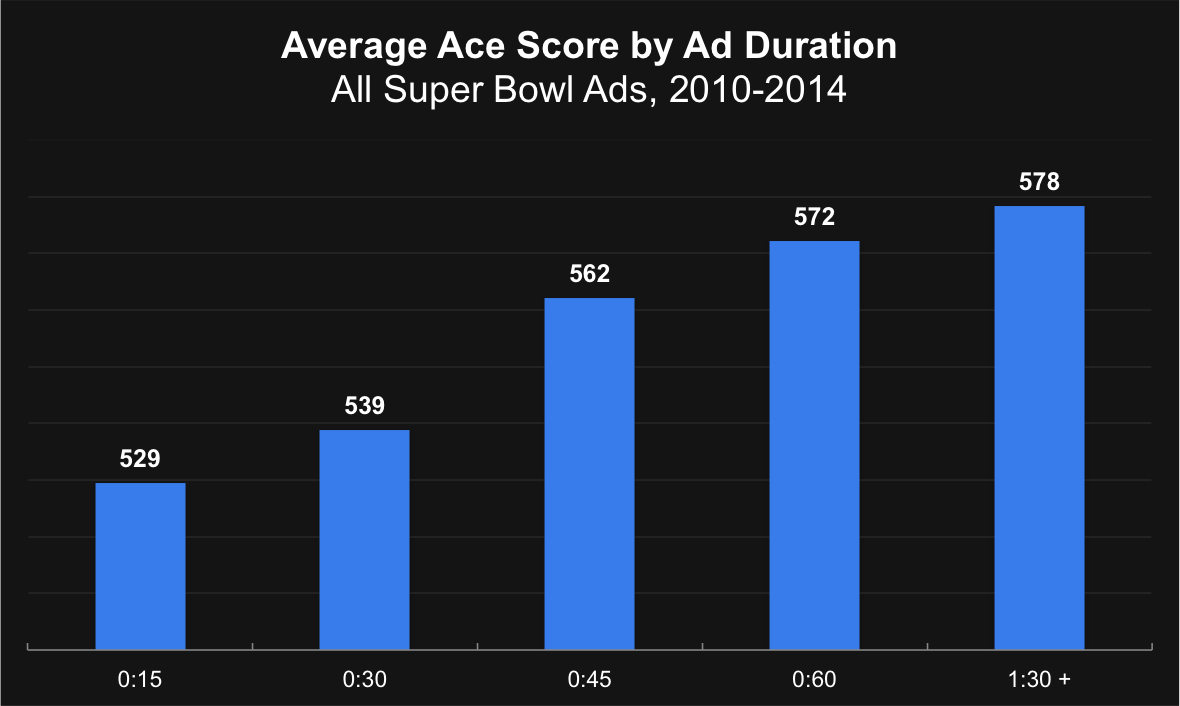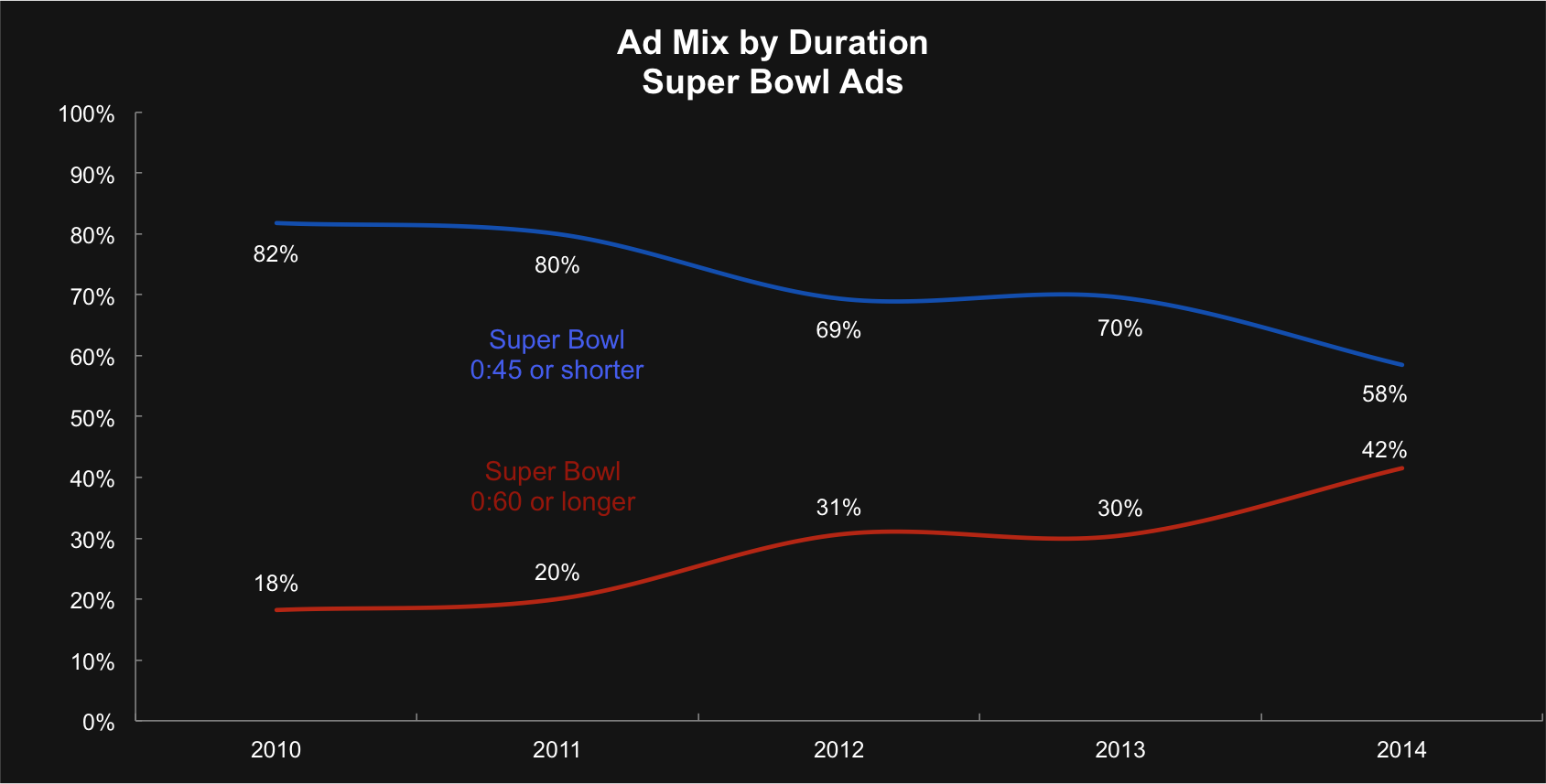With less than a month before Super Bowl XLIX provides advertisers with the largest and most demographically diverse audience available on television, we thought we’d share the insights gathered from capturing consumer reaction to the past five Super Bowl ad events.
Here are just a few of the trends and themes that we’ve seen over the years. Continue on to the next post to see who winds up on top (and bottom) year over year.
Follow us @Ace_Metrix to hear when our post-game Webinar will take place.
While celebrities make appearances in one-third of all Super Bowl ads, only one of the top 10 highest scoring ads of the past five years includes celebrities. RadioShack generated the fourth highest scoring ad of the 2014 game and fourth highest scoring for the past four years (Ace Score 677). The ad featured not one but a full cast of characters from the ‘80s to effectively make fun of itself and announce a new launch of the stores. The celebrities in this case – Hulk Hogan, Mary Lou Retton, Alf, Chucky, Cliff from Cheers and a slew of other time-stamped characters were used to parody themselves rather than to endorse the brand or leverage current day celebrity power to earn brand buzz.
At the bottom of the list, however, eight of the 10 lowest scoring ads of the Super Bowls since 2010 include celebrities (four of the eight from GoDaddy, with the others from Hulu and beer brands BudLight, Michelob and Stella. Overall, Super Bowl ads without celebrities have performed on average 3% better than ads with them– with 2014’s gap widening to 4.5%.
Animals and Babies are great casting. Eight of the top 10 ads since 2010 have included an adorable kid or a furry mammal, while those ten ads that make up the bottom lack either. Perhaps advertisers should trade in their celeb budgets for daycare and animal trainers.
Likewise, in general, television audiences find puppies and goats much more appealing than scantily clad men in expensive briefs. None of the top 10 (nor the top 26 in fact) could be described as “sexy” while four of the bottom 10 attempts to allure. Overall, Super Bowl’s sexy ads performed 8.3% lower than ads without a sexy theme.
While the net cost of air-time during the game has risen significantly year over year, advertisers are increasingly extending their spots to take full advantage of the captive audience. In 2014, 42% of ads that ran during the game were :45 or longer as compared to 18% in 2010, and 20% in 2011. When looked at in aggregate, Super Bowl ads earn stronger scores as the duration increases. The average Ace Score rises from 529 for :15 spots to 572 for :60 and those ads longer than :60 on average earned 580.

